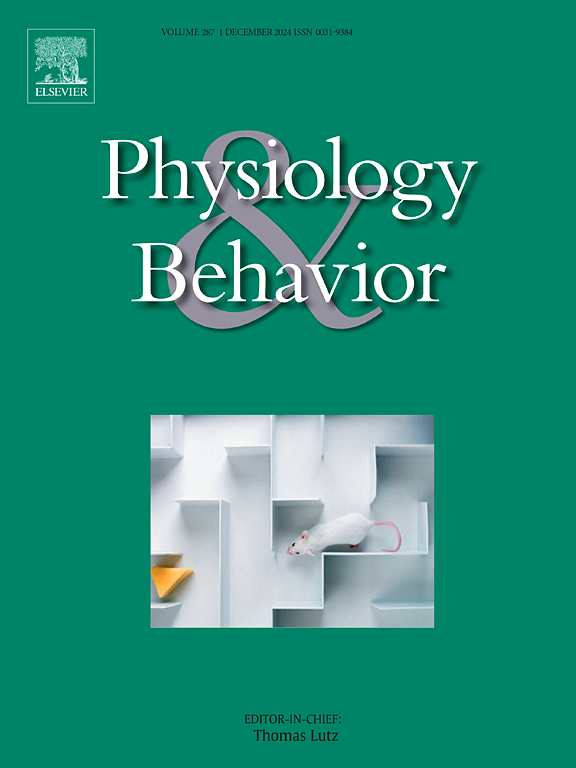An integral view of gut microbiome diversity and functional metabolic changes of a gut-brain axis associated with dementia based on metagenomic analysis
IF 2.5
3区 医学
Q2 BEHAVIORAL SCIENCES
引用次数: 0
Abstract
Background
Growing evidence highlights the vital role by gut microbiota in brain health through the gut-brain axis, which involves neural, immune, endocrine, and metabolic signaling pathways. Disruption of this axis through microbial dysbiosis is increasingly linked to cognitive disorders, including dementia. However, the specific taxa and pathways involved remain poorly characterized. This study investigates taxonomic and functional shifts in the gut microbiome across healthy individuals, mild dementia, and dementia patients, aiming to identify microbial signatures and metabolic alterations associated with cognitive decline.
Methods
A total of 184 participants (aged 60–98) were recruited and grouped into healthy, mild dementia, and dementia categories based on Clinical Dementia Rating scores. Demographic and clinical data were collected through structured interviews. Fecal samples were collected from participants and DNA was extracted and subjected to 16S rRNA gene sequencing. Sequencing data were processed using QIIME2 and classified using the SILVA database. Alpha (Shannon, Inverse Simpson) and beta diversity (Bray-Curtis PCoA) were analyzed between participant groups. Functional prediction was performed with PICRUSt2 to estimate KEGG orthologs from normalized ASVs. Statistical analyses were conducted in R using Kruskal-Wallis and PERMANOVA tests to assess group-level differences.
Results
Dementia patients exhibited the highest proportion of unique ASVs (32.1 %) but showed reduced alpha diversity compared to mild dementia and healthy controls. PCoA revealed distinct microbial clustering across groups, explaining 19.3 % of total variance, with dementia samples forming a unique cluster. Taxonomically, dementia samples were enriched in Firmicutes and pro-inflammatory genera such as Peptoclostridium and Scardovia, while healthy controls harbored more SCFA-producing taxa like Lachnospiraceae_UCG-001. Co-occurrence networks in dementia were more complex, with increased inter-species connectivity and key drivers including Dorea and Clostridium innocuum. Functionally, dementia samples showed enrichment of vanillate degradation pathways and depletion of neuroprotective pathways like ergothioneine and vitamin E biosynthesis, correlating with specific microbial signatures.
Conclusions
Cognitive decline was associated with reduced microbial diversity and selective enrichment of pro-inflammatory taxa, reflecting gut ecological instability due to dementia. Microbial composition shifted progressively with dementia severity, indicating disease-specific gut microbial restructuring. Moreover, the loss of key functional microbial metabolites such as neuroprotective and anti-inflammatory metabolites supports targeting such metabolites and their producing gut microbiota as a therapeutic strategy for dementia. Future studies should ensure generalization by recruiting multi-center participants with strict guidelines for monitoring confounders.
基于宏基因组分析的肠道微生物群多样性和与痴呆相关的肠-脑轴功能代谢变化的整体观点。
背景:越来越多的证据强调肠道微生物群通过肠-脑轴在大脑健康中发挥重要作用,肠-脑轴涉及神经、免疫、内分泌和代谢信号通路。微生物生态失调导致的这条轴的破坏与认知障碍(包括痴呆症)越来越相关。然而,具体的分类群和所涉及的途径仍然缺乏特征。本研究调查了健康个体、轻度痴呆和痴呆患者肠道微生物组的分类和功能变化,旨在确定与认知能力下降相关的微生物特征和代谢改变。方法:共招募了184名参与者(60-98岁),并根据临床痴呆评分分为健康、轻度痴呆和痴呆三类。通过结构化访谈收集人口统计和临床数据。收集参与者的粪便样本,提取DNA并进行16S rRNA基因测序。测序数据使用QIIME2进行处理,使用SILVA数据库进行分类。Alpha (Shannon, Inverse Simpson)和beta多样性(Bray-Curtis PCoA)在参与者组间进行分析。使用PICRUSt2进行功能预测,从标准化asv中估计KEGG同源物。采用Kruskal-Wallis和PERMANOVA检验在R中进行统计分析,以评估组水平差异。结果:痴呆患者表现出独特asv的比例最高(32.1%),但与轻度痴呆和健康对照相比,α多样性降低。PCoA揭示了不同组间不同的微生物聚类,解释了19.3%的总方差,其中痴呆症样本形成了一个独特的聚类。在分类学上,痴呆样本中富含厚壁菌门和促炎属,如胃梭菌属和斯卡多亚属,而健康对照组中含有更多的产生scfa的类群,如lachnospirace_ucg -001。痴呆症的共发生网络更为复杂,物种间连通性增加,关键驱动因素包括Dorea和innocuum。在功能上,痴呆症样本显示香草素降解途径的富集和麦角硫因和维生素E生物合成等神经保护途径的缺失,这与特定的微生物特征相关。结论:认知能力下降与微生物多样性减少和促炎类群选择性富集有关,反映了痴呆导致的肠道生态不稳定。微生物组成随着痴呆症的严重程度逐渐改变,表明疾病特异性肠道微生物重组。此外,神经保护和抗炎代谢物等关键功能微生物代谢物的缺失支持靶向这些代谢物及其产生的肠道微生物群作为痴呆症的治疗策略。未来的研究应通过招募多中心参与者来确保通用性,并严格指导监测混杂因素。
本文章由计算机程序翻译,如有差异,请以英文原文为准。
求助全文
约1分钟内获得全文
求助全文
来源期刊

Physiology & Behavior
医学-行为科学
CiteScore
5.70
自引率
3.40%
发文量
274
审稿时长
47 days
期刊介绍:
Physiology & Behavior is aimed at the causal physiological mechanisms of behavior and its modulation by environmental factors. The journal invites original reports in the broad area of behavioral and cognitive neuroscience, in which at least one variable is physiological and the primary emphasis and theoretical context are behavioral. The range of subjects includes behavioral neuroendocrinology, psychoneuroimmunology, learning and memory, ingestion, social behavior, and studies related to the mechanisms of psychopathology. Contemporary reviews and theoretical articles are welcomed and the Editors invite such proposals from interested authors.
 求助内容:
求助内容: 应助结果提醒方式:
应助结果提醒方式:


